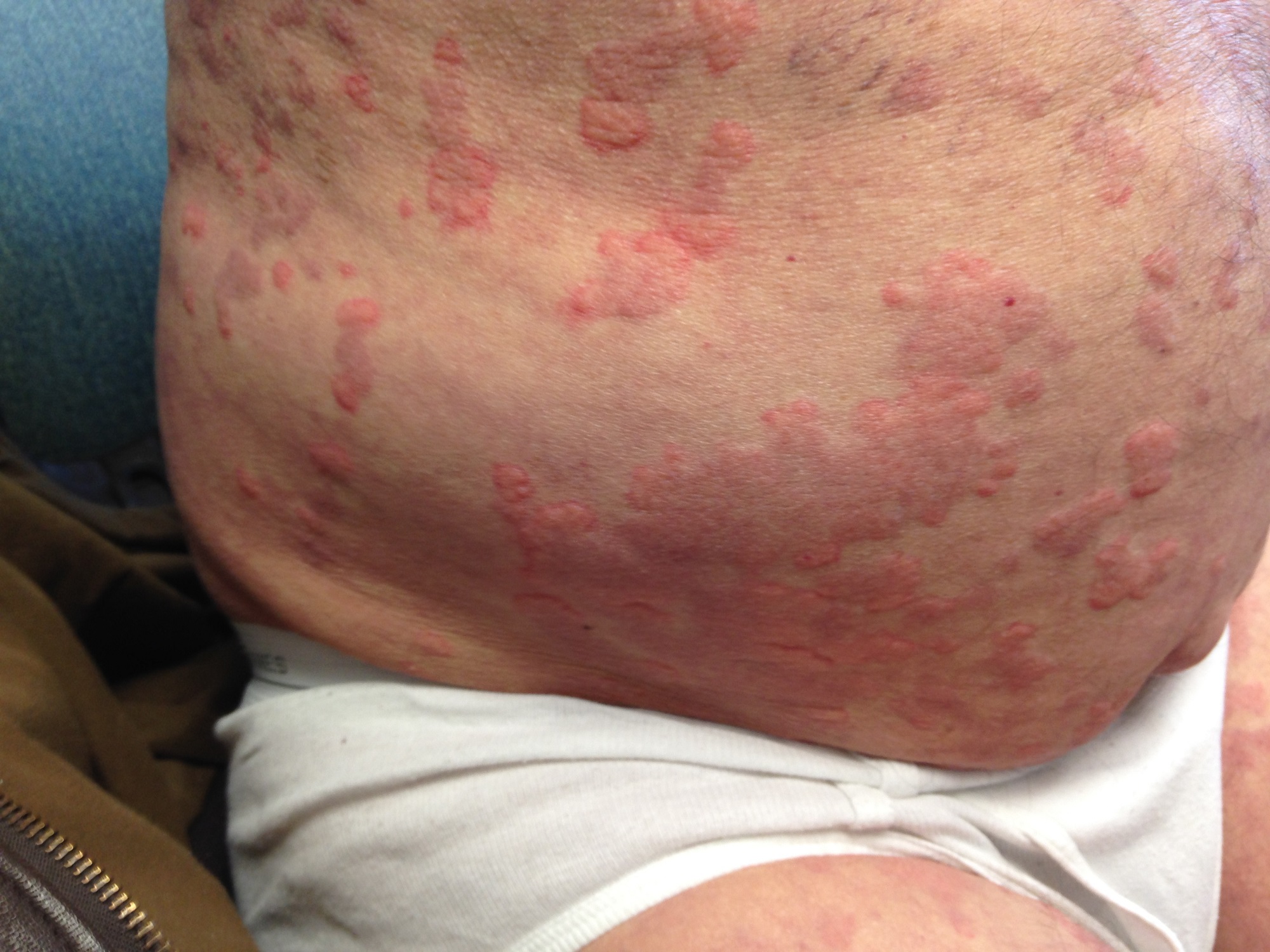What are the symptoms of Wells’ syndrome?
Wells’ syndrome, also known as eosinophilic cellulitis, is a rare skin condition characterized by a distinctive set of symptoms. The key symptoms include:
- Erythematous Rash: Red, inflamed areas of skin that can appear swollen and warm to the touch. The rash often has a patchy or nodular appearance.
- Swelling: Localized swelling, which can be quite pronounced, typically affects the limbs but may involve other areas as well.
- Itching or Pain: The affected areas may be itchy or tender, causing discomfort.
- Fever: Some individuals may experience a mild fever alongside the skin symptoms.
- Blistering: In some cases, the rash can progress to form blisters or vesicles.
- Lesion Changes: The lesions may evolve over time, with initial areas of inflammation often becoming more indurated or thickened.
- Recurring Episodes: The condition may present as recurrent episodes, with periods of flare-ups and remissions.
If you suspect Wells’ syndrome or experience these symptoms, consulting a healthcare provider is essential for proper diagnosis and management.
What are the causes of Wells’ syndrome?
Wells’ syndrome, or eosinophilic cellulitis, is a condition of unknown precise cause, but it is often associated with several factors:
- Allergic Reactions: The condition may be linked to hypersensitivity or allergic reactions to certain substances, including medications or infections.
- Infections: Some cases have been associated with bacterial or viral infections, although a direct causative relationship is not always clear.
- Parasitic Infections: Eosinophilic responses to parasitic infections can be involved, as eosinophils are a type of white blood cell that often increase in response to parasitic infections.
- Autoimmune Disorders: There is evidence suggesting a possible association with autoimmune conditions, where the immune system mistakenly attacks the body’s own tissues.
- Drug Reactions: Certain medications have been implicated in the development of Wells’ syndrome, suggesting that drug reactions might trigger the condition in some individuals.
- Underlying Health Conditions: In some cases, Wells’ syndrome appears alongside other health conditions, such as systemic diseases or malignancies, though these associations are not always consistent.
While these factors can be associated with Wells’ syndrome, the exact mechanism of its development remains not fully understood.
What is the treatment for Wells’ syndrome?
The treatment for Wells’ syndrome focuses on managing symptoms and addressing any underlying causes or triggers. Here are common approaches:
- Corticosteroids: Oral or topical corticosteroids are often prescribed to reduce inflammation and alleviate symptoms. They can be effective in managing the skin lesions and symptoms associated with Wells’ syndrome.
- Antihistamines: These may be used to control itching and allergic reactions, especially if an allergic component is suspected.
- Avoiding Triggers: Identifying and avoiding potential triggers, such as specific allergens, medications, or infections, is important in managing the condition.
- Antibiotics or Antifungals: If an underlying infection is identified as a trigger, appropriate antibiotics or antifungal medications may be prescribed.
- Immunosuppressive Agents: In cases where corticosteroids are not effective or are not well-tolerated, other immunosuppressive medications, such as methotrexate or azathioprine, may be considered.
- Supportive Care: Managing symptoms with supportive care, such as moisturizing creams for the skin and treatment for any secondary infections, can be helpful.
Treatment plans should be tailored to the individual, and ongoing follow-up with a healthcare provider is important to adjust treatment as needed and manage any potential side effects.

Leave a Reply
You must be logged in to post a comment.